Preservation of foodstuffs. The site is suitable for PC - Tablet - Mobile phoneI am writing this page in English with Google translator. Click the Danish version and see the original Danish website.When food is to be preserved, several things must be taken into account if these foods are to be successfully stored for a long time. The following must be avoided: Oxygenation, Heat, Neutralization of the acid content and Unwanted microorganisms. The following can be done: Regulate the humidity, Remove decomposition enzymes, Add inhibiting substances, Add "poison" when smoking.
Ever since ancient times, people have shown how it was possible to extend the shelf life of food without modern aids. After all, when the harvest was in, you had to be able to store the food for the next season, which means one year. Therefore, agents had to be found that prevented the microorganisms from breaking down the food. I believe that this knowledge came by long experience, and not by modern research. But one thing is certain, modern science uses the same technique today and has simply mapped out that it works and how it works. Oxidation 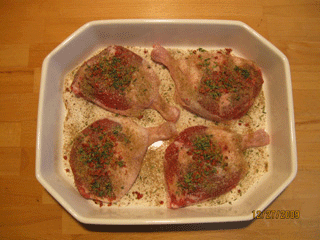
Here the method is used on duck thighs. Confit de Canard Oxidation: If the microorganisms have access to oxygen, the food will rotten very quickly. It was therefore considered to exclude atmospheric oxygen to food. This could be done in different ways, the old stone jars with boiled meat were sealed with fat. This kind of simmering is called "Confit". The method consists of pork, duck or goose being cooked in its own fat and placed in a stone jar and sealed with a thick mixture of its own fat. You can use the same method for fish. The fish is cooked with herbs and spices. The boiling water is mixed with isinglass, which is then poured over the fish. Once it has cooled and become stiff, it can last a little longer in the fridge than usual. See the recipe here.
Oxidation 
Here the method is used on duck thighs. Confit de Canard When the glass bottle was invented, these were sealed with a cork and resin sealed. Hereby given the wine a distinctive flavor of resin, and was called "Retsina". This wine is particularly widespread in Greece.
Oxidation 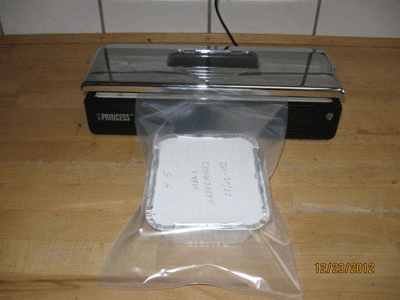
Here, the method is used on vacuum packed liver pâté Today, you can make airtight cans - hermetic - or plastic bags vacuumed and then filled with carbon dioxide CO2. You can store the food in alcohol, cooking oil or freeze the food. Fatty fish must be taken into account here, regardless of a chemical process by the microorganisms, a rancidity of the fat in the fish can occur, which makes it disgusting to eat.
Oxidation 
Here is the method used on trout in jelly or "Confit la Truite" Heat: It has always been known that food spoils if it is stored too hot. Therefore, in the old days, rock caves, coals or underground cellars were used. In winter, blocks of ice were cut out and placed in deep cellars lined with sphagnum (peat) or heather. It was possible to have these blocks of ice for next winter. Of course, only the royals and the wealthy could afford this luxury of a "freezer". I know a place where the Swedish King spent his summer holidays with such a "deep freezer" in the basement. It is in Båstad and the hotel is now called Rivieraen.
Heat - cold 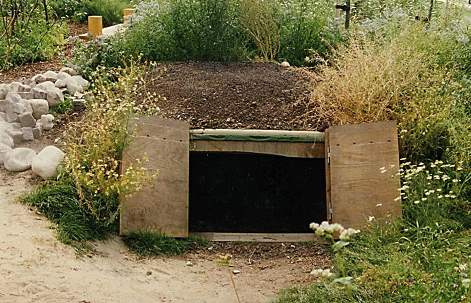
Earth globe for vegetables beautifully arranged in the garden Today, refrigerators and freezers are commonplace, and everyone knows that for short-term storage the temperature must be +5°C or below. For long-term storage, the temperature must be -18°C or below. A note about the +5°C, molds can form down to 0°C. The mentioned temperatures are the ideal and at the same time also the most economical temperatures with respect to electricity consumption.
Heat - cold 
Earth globe for vegetables beautifully arranged in the garden Neutralization of acidity: Normally, you do not neutralize the acid content of the food products - fruit or soil fruit - but add acid in the form of vinegar and, not least, sugar in certain countries. An exception is oxalic acid in spinach and rhubarb, the acid is neutralized and replaced with citric acid. "Ludfisk" also called "Lutefisk", which is probably only known in Norway, Sweden and Finland, is alkaline. It is made from cod or ling, which has been in a weak solution of lye = sodium hydroxide for a few days, after which it is diluted. In Norway and Sweden, it is a typical Christmas dish, served with green pea puree and bacon. I will try to return with a recipe on my website "Recipes", but whether the fish can be bought in Denmark is doubtful. I myself prefer Baccalá.
Neutralization of acidity 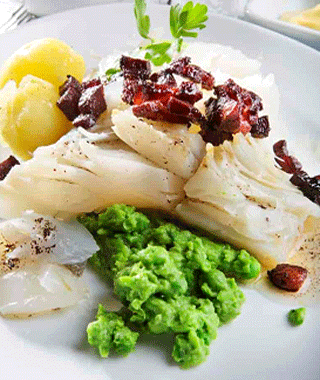
Norwegian lute fish of cod a Christmas dinner Vinegar is actually alcohol that has been degraded in the fermentation process due to a substantial increase of oxygen. You probably recognize the phenomenon, if a drop of wine has stood too long in an open bottle, it becomes acid = vinegar. In Central Europe one could not air dry the food so well because of the climatic conditions, so therefore the preferred method for preservation of fruits or soil fruit was vinegar pickling, it is called sour-gherkins, cucumbers, beetroot and pickles.
Neutralization of acidity 
Norwegian lute fish of cod a Christmas dinner Other forms of preservation are the fermentation of cabbage without a substantial increase of oxygen, known in Germany and Austria as "Sauerkraut". Farmers are also using the method for his animals, called simply silage. Lactic fermentation (enzyme rennet) becomes cheese, so you could enjoy a milk product for longer time.
Undesirable microorganisms: In ancient time one didn't known to the concept of micro-organisms, but experience told, however, our ancestors, if they cook the food, it could remain longer under ideal conditions. This form of preservation was used and is being used today. We call the method canning or pasteurization after Louis Pasteur in 1862 "invented" the method and described it in detail.
Undesirable microorganisms 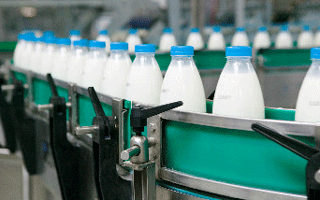
Pasteurization of milk We all know the pasteurized milk and juices. There are certain micro-organisms in sleep mode which can withstand temperatures used in pasteurization. Therefore, the product must be cooled immediately after pasteurization.
Undesirable microorganisms 
Pasteurization of eggs Canned foods should also be kept cool and closed for substantial increase oxygen. See above section "Oxidation".
Regulate humidity: The microorganisms require a certain humidity to proliferate. If the water content kept below 15% the food can not be converted by microorganisms. This has been proved or unproved exercised in northern Scandinavia. Everybody knows "Baccalá" = salted and dried cod. Cod or ling were splited, salted and dried in the cold and dry air in Norway and Sweden. Then packaged and sold at prices that are worth its weight in gold.
Regulate humidity 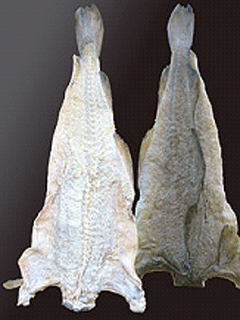
Norwegian Baccalá Many vegetables are also dried, such as yellow peas, flour, oatmeal, raisins, tomatoes and mushrooms. Not to mention all the famous spices. Even dried meat was done. Here is Italy leading with a cured ham, which takes a year or more to mature.
Regulate humidity 
Norwegian dried fish In modern times freeze-drying is used, which allows drying even very water-containing products such as berries and certain spices parsley, dill and coffee, just to name a few.
Eliminate degrading enzymes: Many of our fresh vegetable products contain enzymes that will begin a degradation of the valuable flavoring in the food and make it inedible. Therefore one is forced to remove these degradation enzymes before using any of the other preservation methods. It is known to blanch spinach, kale, peas, cauliflower and carrots before you put these foods in freezers. A brief immersion of the very fresh vegetables in hot water (at least 42°C) and then in cold water will remove many of the degradation enzymes, and raw materials keep taste best with this method.
Eliminate degrading enzymes 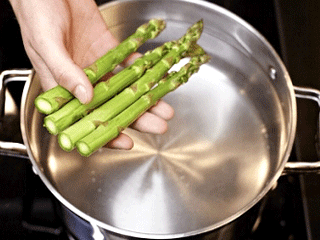
Blanching vegetables - here asparagus Another method is "Radiation" of fresh fruit: Apples, pears, plums, strawberries and any other fruits which may not alter appearance before they are sold. People do not like this method because you don't know for long-term effects of radiation on the human body. It is claimed that fruit coming through the large market in the Netherlands, is Irradiated? How can these fruits otherwise remain far longer than our own from the garden? Try a test with purchased foreign strawberries and your own from the garden. The bought one is two days older than your own from the garden. See for yourself the difference.
Eliminate degrading enzymes 
Blanching vegetables - here beans Add retardant: Addition of inhibitory substances has been known since ancient times. The well-known substance was salt. Salt has had a major impact in Europe, where they had easy access to salt; you could earn a fortune on it.
Add retardant 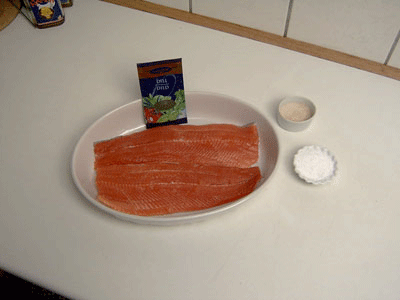
Here it is a gravad trout Salt induces an osmotic relationship - it is water's ability to compensate for differences in particle concentrations on either side of half permeable membrane. What does this mean in practice? Try to dry salt a trout or salmon - gravadlaks - so you see that water escaping from the fish, and you taste the salt penetrates into the fish. Want to know more about osmosis, you must go online.
In Catholic countries, Germany, Italy, France and Spain, they had one month of Lent each year, therefore, be used enormous quantities of fish, salt was worth its weight in gold. Add retardant 
Here it is salted herring Today we also used salt to preserve food with, but perhaps more for reasons of taste. Who can eat salted cod, salted herring, salami, salt meat, bacon, ham, soy sauce - to take some examples - without these foods are salted?
Adding "poison": This is not a recipe for poison your "Mother in law" because she is often indispensable. Without her you were indeed not married to your wife.
Now we go to the serious question. There are a myriad of substances that can be termed "poison" and be used in our food but in smaller quantities. Let me mention some interchangeably: alcohol, phenol, formic acid, nitrite and nitrate. I will not go into all their harmful effects, since even the food industry and the Board are it a "gray area" that is treated differently in the EU. Adding "poison" 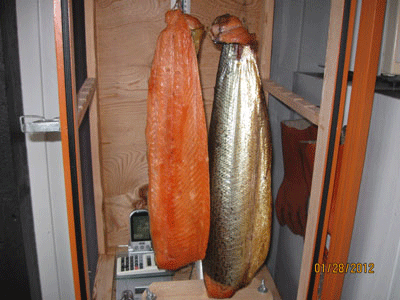
Here is a 3 kg salmon cold-smoked on a cold winter's day in my smoker Everyone knows alcohol and enjoy this in wine, beer, brandy and plum in Madeira. Is it harmful, no, not in smaller quantities? Less known is formic acid, but everyone eats the rye bread and suffers no harm. Nitrite in smoked loin of pork, which gives the red color. Are you dead from eating smoked loin of pork? No! Nitrate in sausage. There could certainly be included many more examples of application of the above additives, but outside of my reach.
You've probably noticed that I skipped Fenol also spelled Phenol. It is what I am interested in when we talk smoke oven and smoked fish and meat. When wood burns with a deficit of oxygen creates a strong smoke. This smoke contains wood tar, which in turn may contain some 10,000 different components. One of these components are bacteriostatic phenol, which just gives the fish or meat an extended shelf life. Different woods give different taste and color of food. Food industry sticks to hardwood trees, except one ever green bush, namely Juniper. Juniper Smoked called "Eel-smoked" which gives a piquant and powerful smoky taste to the product. Adding "poison" 
How to cut cold smoked salmon with a salmon knife The food will have an "acid" flavor of the wood acid which is in the smoke, and it has become accustomed and we appreciate the taste. The industry has found out a "trick" and adds only liquid smoke from a bottle for its products and voila you have "smoked fish". No! You have not; the fish has never been in contact with a real smoke oven.
Go to this website and find "Smoking with hardwood protect food and people" and read more about Smoking. Well! EU is a funny size. Some countries may use nitrate and snuff, others may not use these products. Where is the logic? Should alcohol be sold only from a "Bolage" - read Monopoly, where a former prime minister's wife is the director? Must a minister owning shares in a company where he has influence over a particular preference for an expansion of the company? There is not a day without a scandal in the EU or national governments. A minister should probably also pay TV license? One should own a moving company in Belgium and Luxemburg, so you could earn cool money by moving back and forth. It can only be ignorant people who can not see the extra consumption EU imposes the population of stupid rules and laws. How crooked cucumbers may be in the EU? A Danish minister has obviously read my page and abolished the law on crooked cucumbers. I've got air by making a bitter remark about the EU and the ministers, who manages the national laws, but it does not mean that I am 100% against the EU. What do you say? Smoking: The purpose of smoking is to add the food flavoring, cook food and preserve food. The smoke generated by the plant material burned at a loss of oxygen, if there are too many flames smoke will almost disappear and the heat gets too high. One can also say that the plant material distilled, this is known from the manufacture of charcoal. The most commonly used woods for smoking are: El, beech, oak, hickory, nut, apple, cherry and plum. Less known is peat and dried corn cobs, without corn. Conifers are not used as it provides a taste of resin, terpener is the main component of the resin. The exception is juniper which is used for eel and some types of sausages. Juniper should only be used with caution, as it gives a strong flavor. But use it like a condiment, like all kinds of herbs can be placed in smoke oven and add the food a distinctive flavor. Stinging nettles can also be used and applied like straw to "Rygeost". Straw is giving the smoke and a nice color.
What kind of food does one smoke? Mostly it is meat (pork, lamb, beef, venison and reindeer meat) in whole pieces or prepared as a sausage. Poultry can include duck, goose and turkey. Of fish include salmon, halibut, trout, herring, mackerel, garfish, eel and cod roe. Of milk products is "Rygeost" best known, and a goat cheese "Gouda". Barley also smoked in the manufacture of Scotch whiskey and some kinds of beer. The Chinese smoke also a tea with whole rice added with sugar. Spices include smoked Jalapeño peppers from Mexico, smoked paprika, yes! Even smoked salt is also available. I do this. Wood smoke: Hardwood - alder, beech, oak, plus the other mentioned tree varieties - contains most cellulose, hemicelluloses and lignin plus other substances not to be mentioned here. Softwood - pine and fir - also contains resin, therefore not suitable for smoking. Cellulose and hemicellulose are sugar molecules that caramelize when burned and emit a sweet and fruity aroma to food. Lignin is very complex and also gives a piquant flavor and oxidant preservatives in the form of phenol to the food. Smoking 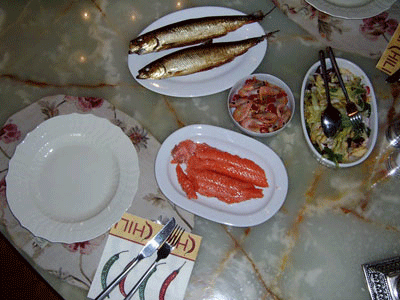
Two delicious home-smoked herring for lunch Most of the components in wood smoke are antioxidants and act as a preservative. The pH value in the wood smoke is low around 2.5 (pH of 7 is neutral, below 7 is acid and above 7 is base. The scale is from 0 to 14). In wood smoke are also some tar substances that are directly harmful to health - PAH (Polycyclic Aromatize Hydrocarbon) and Benzo[a]pyrene)- they are carcinogenic. One can reduce this detrimental effect by "burning" the wood or wood dust at the lowest possible temperature. Wood with high lignin content tend to burn at a higher temperature, thus one can dip the wood in water before placing them on the fire. The ideal temperature of the fire is between 300°C and 400°C not to be confused with the ambient temperature in smoke oven at 55°C to 80°C. Then one can choose a wood that gives the lowest tar substances, such as beech rather than alder and oak.
Smoked herring and eel remains below 1 microgram tars per kg, and one should not eat more than 5 micrograms per days before it becomes "criminal". Can you eat 5 kg smoked fish a day? Finally, remember that just throwing fish skin away, because here are mostly of tar substances. Smoking 
This is what a good smoke looks like against a blue sky You can see a good smoke in the picture above. It is obtained by a good draft in the smoking oven. So how do you get it? Fit a Jet hood, it helps to create a negative pressure in the smoker, which then sucks in new air from below. By regulating the intake and venting, you can achieve the perfect combustion with a deficit of oxygen and thus the perfect white smoke development. Always remember a WHITE smoke and not a BLACK smoke.
Hot smoking process: Most foods are hot smoked at a temperature between 55°C and 80°C. Time depends as to which kind of food to be smoked. For hot smoking is the food in the same chamber as the used smoke material. Normally hot smoking can kill the undesirable microorganisms, which might be present in food. I have a note to eel smoking. Eels must be hang wet into a 100°C hot smoke oven to be "cooked" so they can open themselves in the belly. The word "cooked" must not be taken literally, but to open up the belly, the eels hang around 30 minutes in a very hot smoke oven. Once the belly is opened, dampened the fire with wood dust, so the temperature is lowered to 70°C and the smoke begins. Cold smoking process: Is a lengthy process that takes place in the manner that created a separate furnace, which may provide a smoke development, entering into a smoking chamber where the food is placed. The temperature in the smoking chamber is typically between 15°C and 25°C and smoking time can range from days to weeks. Since the temperature is so low the meat structure will not change (albumen not clot), and the undesirable microorganisms will not be killed by heat, but perhaps of phenol in the smoke. Phenol is a preservative and disinfectant. Usually one salted the food before they cold smoked, so it also helps to inhibit the undesirable microorganisms when liquid content is lowered to 15% or below. A good advice: Use only approved and pure products for the development of smoke. It costs so little and gives you a good product in the end. Back to the page where you came from. |

one.com |